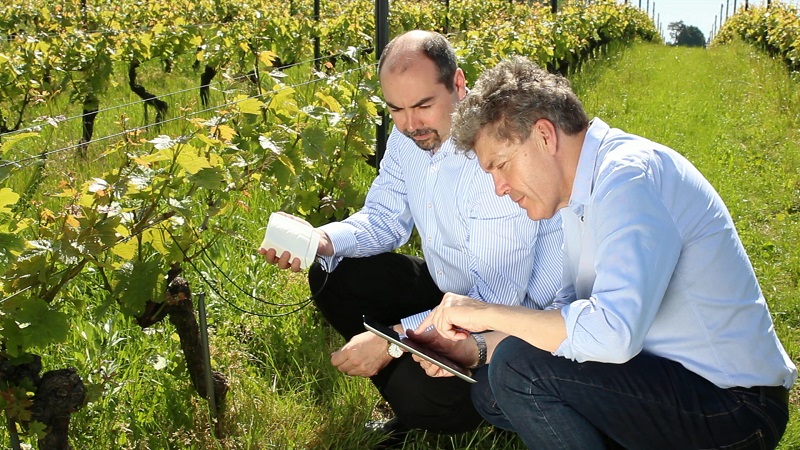Institution news
Institution member, Dr Nigel Wallbridge PhD MIMechE MBA, is the executive director of Swiss-based company Vivent Sarl, which develops medical solutions and plant monitoring systems.
Vivent has recently developed a piece of 'wearable technology' for plants called PhytlSigns, which works by amplifying the electrical signals that plants use to communicate internally.
Nigel Wallbridge said: "By analysing the signals our plants are emitting we can start to unlock the messages within them, and ultimately decode the language of plants.”
Bio-signals were discovered more than 100 years ago but are difficult to study because they are so tiny relative to background electromagnetic interference.
PhytlSigns listens in to what the plant itself is communicating, whereas current technology measures the environment around the plant such as the air temperature or soil. This allows people, for the first time, to hear its signals (through a speaker attached to the device) and see them (through a phone or tablet app).

Nigel said: "I was studying CANbus systems as part of my work in the rail sector. A CANbus is a standard operating protocol developed in the 1980s to enable microcontrollers in vehicles to communicate with other applications without a host computer. In your car, for instance, the speedometer communicates with the door locking mechanism through the CANbus.
“I wondered if there are distributed control networks in the human body similar to the CANbus in a vehicle. Our research in this area started in 2012. Although we found some evidence of these networks’ existence in people, I knew that it would take years of research to develop approved products.”
Carrol Plummer P.Eng BSc MBA, mechanical engineer and founder and CEO of Vivent, added: "I saw an article in New Scientist about plant intelligence and communication and we started looking for electrical signals in plants. Finding them proved much easier than it had done in humans, so our product development journey began in earnest.

“We developed a ‘breadboard’, a base for prototyping electronics. Soon, we realised we could monitor the electrical signals if the plants were inside a Faraday cage – which is how most plant research is done. A Faraday cage blocks ambient electromagnetic radiation and makes the plant signals easier to see amongst the electrical noise in the environment.
“But we knew that to be useful, outside of research, we would need to find a way to monitor plant signals in their natural environment. Fortunately, the PhytlSigns team included people with a deep knowledge of radio signals and design of electrical filters. We also linked up with experts in signal processing – and developed both electronics and analytics that enable plants to be monitored both indoors and outdoors.”
The device has been trialled recently and covered by New Scientist.